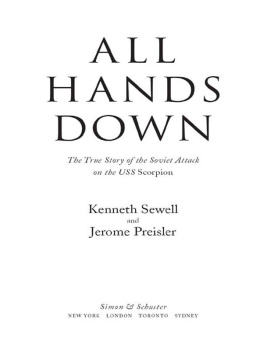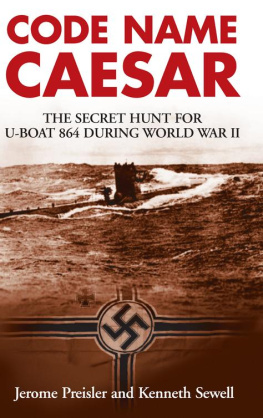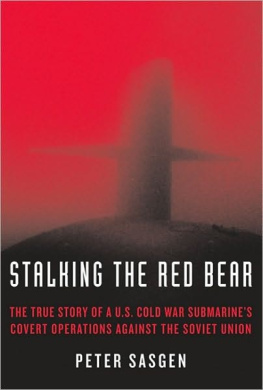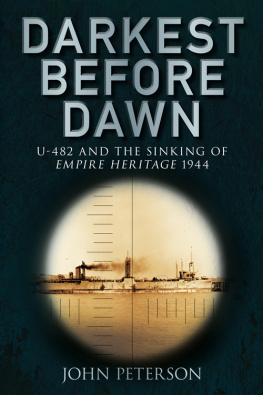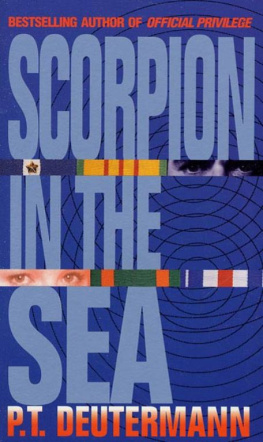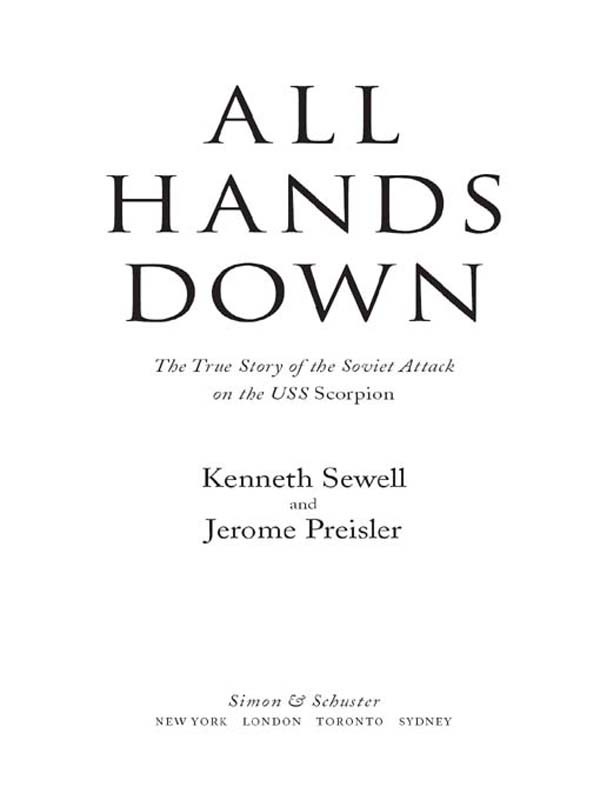Strike Attempt on the U.S. (with Clint Richmond)
All rights reserved, including the right to reproduce this book or portions thereof in any form whatsoever. For information address Simon & Schuster Subsidiary Rights Department,
1230 Avenue of the Americas, New York, NY 10020
SIMON & SCHUSTER and colophon are registered trademarks of Simon & Schuster, Inc.
For the families left waiting in the storm.
PROLOGUE: ABYSS
THE ATLANTIC OCEAN, FOUR HUNDRED
MILES SOUTHWEST OF THE AZORES
ARCHIPELAGO, SUMMER 1986
ITS BALLAST TANKS FULL, HEAVY WITH FOUR SETS OF iron descent weights, the deepwater submergence vehicle Alvin drops toward the ocean floor. The cramped, chill titanium sphere of its control room is darkened, or mostly so. There is a faint glow from its instrument panels, and a greenish cast to the pale cocoon of light outside the observation ports. Several small lights, used by the crew to take notes or operate cameras and tape recorders, have been turned off. When you are going to look out into the dark, you keep the spheres interior as dim as possible.
Almost insectile in its contours, Alvin floats down and down like a firefly through a moonless, starless nocturnal sky.
On the surface, where the craft commenced its journey, the day is still young. For those aboard the Alvin the transition from daylight to total darkness was rapid and dramatic. The submersible began its descent bathed in the pale orange morning sunlight that penetrates the first few meters of the ocean surface. Water absorbs one hundred times more red light than blue, and as Alvin slipped below the waves, everything outside would have taken on an increasingly bluish tint.
To the human eye, white objects appear blue underwater, and red objects fade to gray.
About six minutes into the dive, the suns rays would have ceased to filter through the water altogether, leaving Alvin in darkness except for the glow of a thallium/iodide metal vapor light several feet above the main view port.
The T/I emits an intense beam in the green spectrum. That is the wavelength to which the eye is most sensitive, making it very efficient as a driving light. Fifteen feet in front of the submersible the pool of illumination is quite bright. Further ahead it begins to weaken and transitions to a murky twilight.
The pilots habit is to switch on Alvin s T/I fairly early in his dive. Without it, he would not be able to see anything outside, and he likes to judge his rate of descent by the movement of what is known as marine snow. This suspended detritus is mostly organic and is composed of anything from the fecal matter of aquatic life forms to bits and pieces of dead sea creatures broken down by the relentless motion of the water and biological forces. The particulate is graduallyalmost imperceptiblytraveling downward to the bottom sediment, but for the purposes of measuring relative velocity with the naked eye, it can be regarded as stationary.
Looking out while the driving light is on, the pilot can see marine snow seemingly drifting upward in the water column, and experience has taught him how fast that movement should appear when hes descending at the proper rate. If the upward drift of the particles looks very slow, something is wrong with his ballast and he isnt descending at the speed he should bea steady rate of thirty meters, or slightly over a hundred feet, per minute.
For the pilot, this visual estimate of downward movement provides a comfort factor, and so far everything looks to be working fine. There are no problems.
Like aircraft pilots in flight over surface terrain, those who have sat at the controls of deepwater submersibles use the term altitude when referring to their distance above the seabed, which in this case is about 10,300 feet beneath the surface. Descending at its steady rate of thirty meters, or slightly over a hundred feet, per minute, Alvin reaches a depth of 6,000 feet below the surfaceor an altitude of 4,300 feet, by the reckoning of its pilot and copilotabout an hour into the dive.
This is deep in what marinologists call the abyssal zone, an ocean depth where the sun does not penetrate, and hasnt since the dawn of time. The temperature is near freezing. No gravitational currents stir the water, no storm surges are felt. Here, beyond the influence of tide and weather, it is an everlasting midnight, as still as the furthest reaches of outer space.
Because photosynthesis cannot occur here, the region lacks any form of plant life and supports just a few unique species of marine animals. There are giant squid, sixteen-inch-long tubeworms, deep-sea clams that measure a foot across, and other biological wonders adapted to the lightlessness and immense pressure bearing upon themwhich may be up to six hundred times greater than the atmospheric pressure on the earths surface. Exposed to these conditions, a human body would be crushed, the ribcage collapsing around the lungs, blood vessels bursting, the soft organs turning to pulp.
A nuclear submarine reaches its depth limit at between 1,500 and 3,000 feet underwater, depending on its design. When that maximum limit is exceeded, its metal hull yields to the surrounding pressure and implodes.
Alvin, in stark contrast, is at home in the abyss. Its crew compartments spherical hull allows for the uniform distribution of ocean pressure in what is known as an isostatic manner. In principle, the hull works much like a simple arch. Its curvature resolves the forces working against it into compressive stressesor stresses that steel and titanium, the high-strength materials used in deep-submersible pressure hulls, are able to resist.
There are some drawbacks to this design. Manufacturing spherical shapes to the demanding tolerances required for deep-diving ocean exploration is expensive. The sphere also lacks the sleek hydrodynamic shape that would allow Alvin to move quickly through the water, and its curved interior walls do not easily accommodate the rectangular housings that encase critical instruments needed for the submersibles operation. These surfaces are, moreover, uncomfortable for its occupantsfor most people sitting against curved walls results in achy backs and shoulders. But speed isnt a requirement for Alvin, and the relatively short duration of its mission is well within the limits of the crews endurance.
As the submersible continues going down at its unvarying rate, the crew experiences a smooth, stable trip to the bottom. Alvin s external weight stacks and attached scientific equipment have been distributed to balance the crafts center of gravity, and the result is a perfectly even trim. There is no list. There is no pitch. If you are Alvin s pilot, youre thinking that things are going well. So far.

